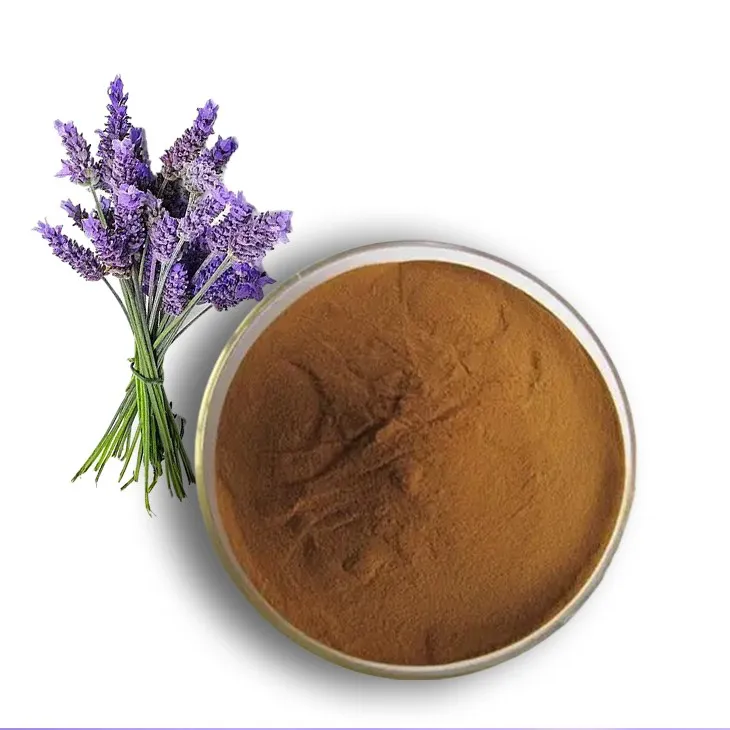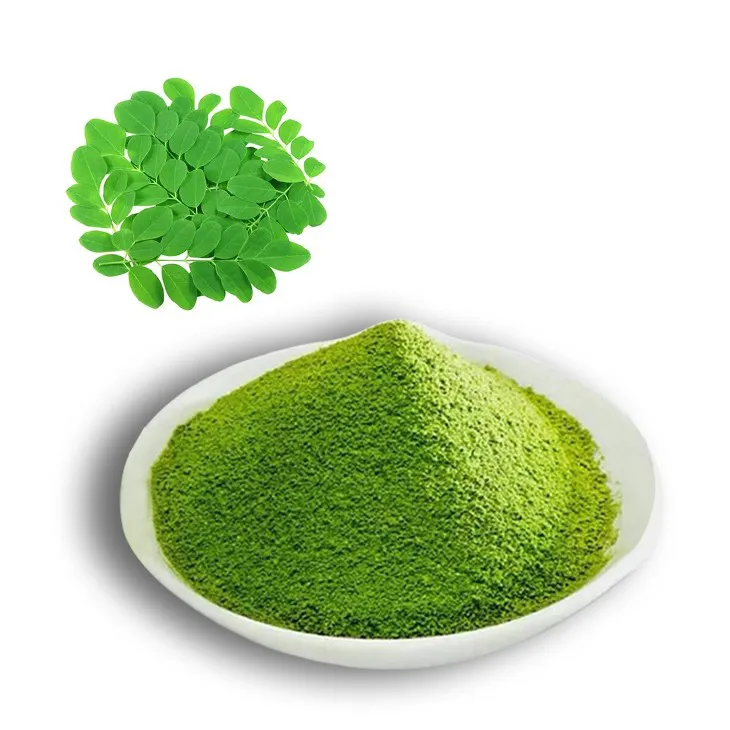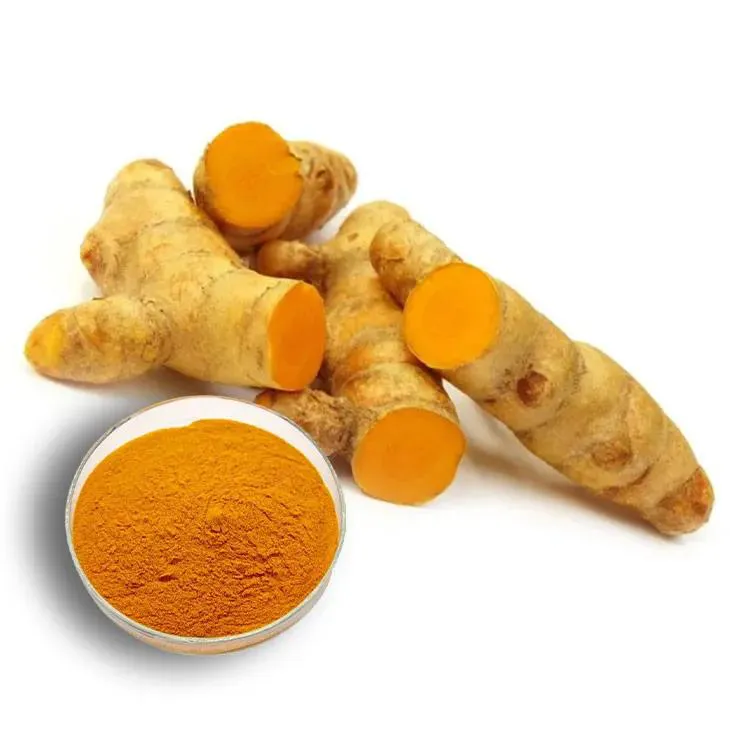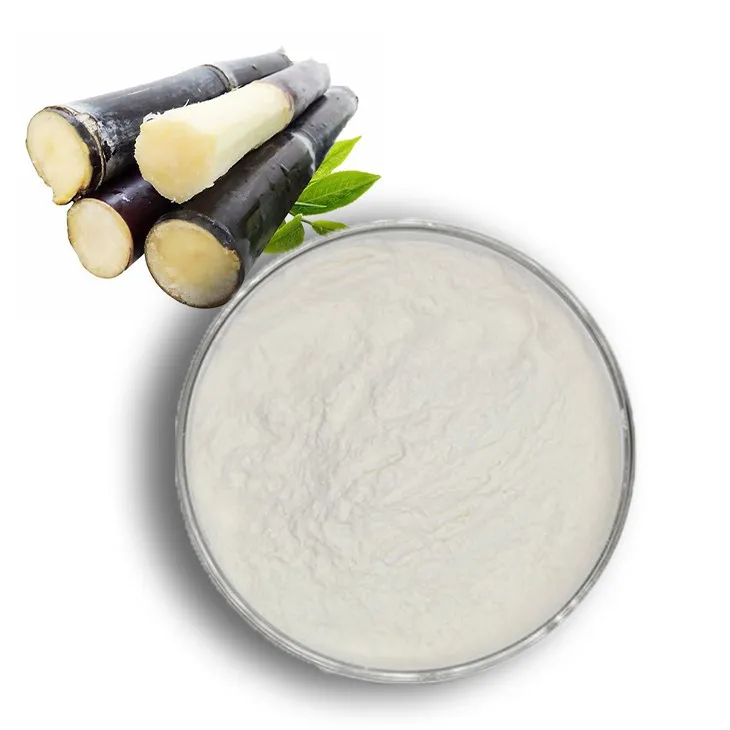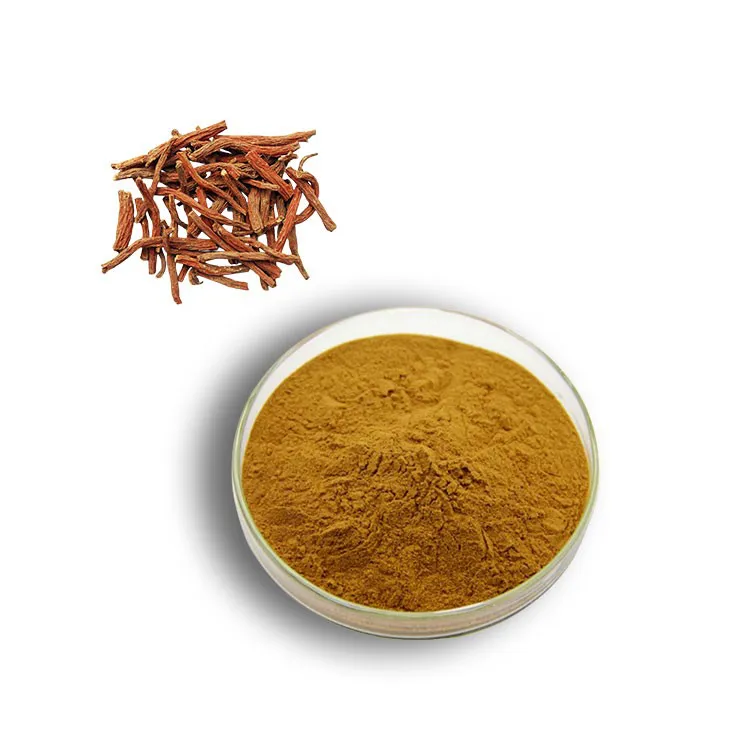- 0086-571-85302990
- sales@greenskybio.com
Ensuring Purity and Potency: The Fundamentals of Quality Control in Plant Extracts
2024-07-06
1. Introduction
Plant extracts play a significant role in various industries, including pharmaceuticals, cosmetics, food and beverage, and dietary supplements. The purity and potency of these extracts are crucial as they directly impact the effectiveness and safety of the end products. Comprehensive quality control measures are essential to ensure that plant extracts meet the required standards for different applications. This article delves into the fundamentals of quality control in plant extracts, starting from the very beginning - the selection of plant species.
2. Selection of Plant Species
2.1. Identification and Authentication
The first step in ensuring the quality of plant extracts is the accurate identification and authentication of the plant species. This is not always straightforward as there may be similar - looking plants or cases of mislabeling. Botanical expertise is required to correctly identify the plant based on its morphological characteristics, such as leaf shape, flower structure, and stem features. In addition, modern techniques like DNA barcoding can be used for more precise identification. DNA barcoding involves sequencing a short, standardized region of the plant's DNA and comparing it with a reference database to confirm the species.
2.2. Source Considerations
The source of the plant material also matters greatly. Plants can be sourced from the wild or cultivated.- Wild - sourced plants: While they may offer unique genetic diversity, there are challenges. For example, over - harvesting can lead to depletion of natural populations. There may also be issues with contamination from environmental pollutants, pesticides (if used illegally in the wild), and other substances.
- Cultivated plants: On the other hand, offer more control over the growing conditions. Cultivators can ensure proper soil quality, irrigation, and pest management. However, it is important to ensure that the cultivation practices are sustainable and that the plants are not exposed to excessive use of chemical fertilizers or pesticides that could contaminate the final extract.
3. Harvesting and Post - Harvest Handling
3.1. Optimal Harvesting Time
The time of harvesting can significantly affect the quality of plant extracts. Different plants have different optimal harvesting times based on their growth cycles and the active compounds they contain. For example, some medicinal plants may have the highest concentration of active ingredients just before flowering, while others may be best harvested when the fruits are fully ripe. Harvesting at the wrong time can result in lower yields of active compounds, thus affecting the potency of the extract.
3.2. Post - Harvest Handling
Immediately after harvesting, proper handling is crucial.- Cleaning: The plant material should be thoroughly cleaned to remove dirt, debris, and any foreign matter. This helps prevent contamination of the extract.
- Drying: Drying is often necessary to preserve the plant material. However, the drying method and conditions are important. Air drying, sun drying, or drying using specialized equipment should be done at appropriate temperatures and humidity levels to avoid degradation of the active compounds. For example, high - temperature drying may cause some heat - sensitive compounds to break down.
- Storage: Once dried, the plant material needs to be stored properly. It should be stored in a cool, dry place, away from sunlight and sources of moisture. Improper storage can lead to mold growth or chemical changes in the plant material, which will ultimately affect the quality of the extract.
4. Extraction Process
4.1. Selection of Extraction Method
There are various extraction methods available, such as solvent extraction, supercritical fluid extraction, and steam distillation.- Solvent extraction: This is a commonly used method. The choice of solvent is critical as it can influence the purity and composition of the extract. For example, ethanol is a popular solvent for extracting many plant compounds because it is relatively safe and can dissolve a wide range of substances. However, some solvents may leave residues in the extract, which need to be carefully removed to ensure purity.
- Supercritical fluid extraction: Using supercritical carbon dioxide, for instance, has the advantage of being a "green" extraction method as carbon dioxide is non - toxic and can be easily removed from the extract. It also allows for selective extraction of specific compounds based on the pressure and temperature conditions.
- Steam distillation: Is mainly used for extracting essential oils from plants. It is based on the principle that volatile compounds in the plant will vaporize with steam and can then be condensed back into a liquid. However, this method may not be suitable for extracting non - volatile compounds.
4.2. Optimization of Extraction Conditions
In addition to choosing the right extraction method, optimizing the extraction conditions is essential. Factors such as temperature, pressure (in the case of supercritical fluid extraction), extraction time, and solvent - to - plant ratio need to be carefully adjusted. For example, increasing the extraction time may initially increase the yield of the active compounds, but after a certain point, it may lead to the extraction of unwanted substances or degradation of the desired compounds.5. Purification and Concentration
5.1. Purification Techniques
After extraction, the extract may contain impurities that need to be removed to enhance its purity.- Filtration: Simple filtration can remove larger particles such as plant debris. Membrane filtration with different pore sizes can be used to separate molecules based on their size, allowing for the removal of smaller impurities.
- Chromatography: Techniques like high - performance liquid chromatography (HPLC) and gas chromatography (GC) can be used to separate and purify specific compounds in the extract. HPLC is particularly useful for separating polar compounds, while GC is more suitable for volatile and non - polar compounds.
5.2. Concentration of the Extract
In some cases, it may be necessary to concentrate the extract to increase the potency. Concentration can be achieved through methods such as evaporation under reduced pressure or freeze - drying. However, care must be taken not to over - concentrate and cause precipitation or degradation of the active compounds.6. Quality Testing of Plant Extracts
6.1. Chemical Analysis
Chemical analysis is a fundamental part of quality control for plant extracts.- Identification of Active Compounds: Using techniques like HPLC, GC, and mass spectrometry (MS), the presence and quantity of the active compounds in the extract can be determined. This helps ensure that the extract contains the expected bioactive substances at the appropriate levels.
- Detection of Impurities: Chemical analysis can also detect the presence of impurities such as heavy metals, pesticides, and residual solvents. The levels of these impurities must be within the acceptable limits set by regulatory agencies. For example, the presence of high levels of heavy metals like lead, mercury, or cadmium can pose serious health risks to consumers.
6.2. Microbiological Testing
Microbiological testing is essential to ensure the safety of plant extracts.- Total Microbial Count: Determining the total number of microorganisms (bacteria, fungi, etc.) in the extract helps assess the overall microbial load. High microbial counts can indicate poor manufacturing practices or contamination during handling.
- Pathogen Detection: Specific tests are carried out to detect the presence of pathogenic microorganisms such as Escherichia coli, Salmonella, and Staphylococcus aureus. The presence of these pathogens in plant extracts is unacceptable as they can cause serious infections in consumers.
6.3. Physical and Sensory Testing
Physical and sensory testing also contribute to the overall quality assessment of plant extracts.- Appearance and Color: The appearance and color of the extract can give an indication of its quality. For example, a significant change in color may suggest degradation of the active compounds or contamination.
- Odor and Taste: The odor and taste of the extract are important, especially for plant extracts used in the food, beverage, and cosmetics industries. Unpleasant odors or tastes may be due to spoilage or the presence of off - flavors.
- Solubility: In some applications, the solubility of the extract in different solvents may be a crucial factor. For example, in the formulation of liquid products, the extract should have the appropriate solubility characteristics.
7. Standardization and Certification
7.1. Standardization of Plant Extracts
Standardization of plant extracts involves ensuring that the extracts have consistent levels of active compounds. This is important for reproducibility in product formulations. Standardized extracts are often required in the pharmaceutical and dietary supplement industries. For example, a standardized ginseng extract would have a defined amount of ginsenosides, the main active compounds in ginseng. Standardization can be achieved through careful control of the extraction and purification processes and regular quality testing.
7.2. Certification and Regulatory Compliance
To ensure the quality and safety of plant extracts, certification and regulatory compliance are necessary.- Good Manufacturing Practice (GMP): Adhering to GMP guidelines ensures that the manufacturing processes are carried out in a controlled and hygienic manner. This includes aspects such as proper documentation, personnel training, and quality control procedures.
- Certification by Regulatory Bodies: In many countries, regulatory bodies such as the Food and Drug Administration (FDA) in the United States or the European Medicines Agency (EMA) in Europe play a crucial role in certifying plant extracts for use in different products. These agencies set standards for quality, safety, and efficacy, and products must meet these standards to be legally marketed.
8. Conclusion
Quality control in plant extracts is a complex and multi - faceted process that begins with the selection of plant species and extends all the way to the final product testing. Ensuring the purity and potency of plant extracts is essential for their successful application in various industries. By implementing comprehensive quality control measures, including proper identification of plant species, optimal harvesting and handling, appropriate extraction and purification methods, thorough quality testing, standardization, and compliance with regulatory requirements, manufacturers can produce consistent, effective, and safe plant extracts for the market. This not only benefits the end - users in terms of product effectiveness and safety but also helps to build trust in the plant - extract - based products among consumers.
FAQ:
Question 1: Why is the selection of plant species important in ensuring the quality of plant extracts?
The selection of plant species is crucial as different species have different chemical compositions. The correct species ensures that the desired active compounds are present in the extract. Incorrect species selection may lead to the absence of key components or the presence of unwanted substances, which can affect the purity, potency, and safety of the plant extract. For example, some plants may have look - alikes that are not therapeutically effective or may even be toxic.
Question 2: What are the main steps in quality control during the production of plant extracts?
The main steps include raw material inspection (ensuring the correct plant species, proper harvesting time, etc.), extraction process control (using appropriate solvents and extraction techniques to maximize the yield of active compounds while minimizing impurities), purification steps to remove unwanted substances, and final product testing for purity, potency, and safety. Each step is carefully monitored to ensure that the final plant extract meets the required quality standards.
Question 3: How is the potency of plant extracts measured in quality control?
Potency can be measured through various methods. One common approach is to analyze the concentration of specific active compounds in the extract using techniques such as high - performance liquid chromatography (HPLC). Bioassays can also be used to determine the biological activity of the extract, which gives an indication of its potency. For example, if an extract is supposed to have antimicrobial properties, a bioassay can be carried out to measure its ability to inhibit the growth of specific microorganisms.
Question 4: What role does final product testing play in ensuring the quality of plant extracts?
Final product testing is the last checkpoint to ensure that the plant extract is of high quality. It checks for purity (absence of contaminants such as heavy metals, pesticides, and other impurities), potency (adequate levels of active compounds), and safety (absence of toxic substances). This testing ensures that the product is consistent with the expected quality and is suitable for its intended applications in the market, whether it is for use in pharmaceuticals, cosmetics, or dietary supplements.
Question 5: How can quality control ensure the safety of plant extracts?
Quality control ensures safety by several means. Firstly, during raw material inspection, it checks for the presence of toxic plants or contaminants on the plants. During the production process, it monitors for the formation of harmful by - products. And in the final product testing, it specifically looks for the presence of heavy metals, pesticides, and other toxins. By controlling these aspects throughout the production process, quality control helps to guarantee that the plant extract is safe for consumption or use.
Related literature
- Quality Control of Herbal Medicines: An Overview"
- "Plant Extracts: Standardization and Quality Control"
- "Quality Assurance in the Production of Plant - Based Dietary Supplements"
- ▶ Hesperidin
- ▶ Citrus Bioflavonoids
- ▶ Plant Extract
- ▶ lycopene
- ▶ Diosmin
- ▶ Grape seed extract
- ▶ Sea buckthorn Juice Powder
- ▶ Fruit Juice Powder
- ▶ Hops Extract
- ▶ Artichoke Extract
- ▶ Mushroom extract
- ▶ Astaxanthin
- ▶ Green Tea Extract
- ▶ Curcumin
- ▶ Horse Chestnut Extract
- ▶ Other Product
- ▶ Boswellia Serrata Extract
- ▶ Resveratrol
- ▶ Marigold Extract
- ▶ Grape Leaf Extract
- ▶ New Product
- ▶ Aminolevulinic acid
- ▶ Cranberry Extract
- ▶ Red Yeast Rice
- ▶ Red Wine Extract
-
Lavender Extract
2024-07-06
-
Cat Claw Extract
2024-07-06
-
Moringa powder
2024-07-06
-
Curcumin Extract
2024-07-06
-
Reishi mushroom extract
2024-07-06
-
Saw Palmetto Extract
2024-07-06
-
Grapefruit Seed Extract Powder
2024-07-06
-
Sugarcane Extract
2024-07-06
-
Dan Shen Root Extract/Salvia Root Extract
2024-07-06
-
Uridine-5'-monophosphate Disodium salt
2024-07-06











